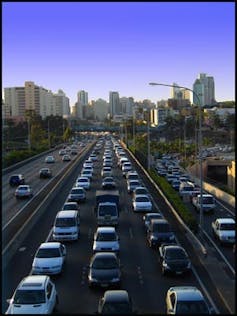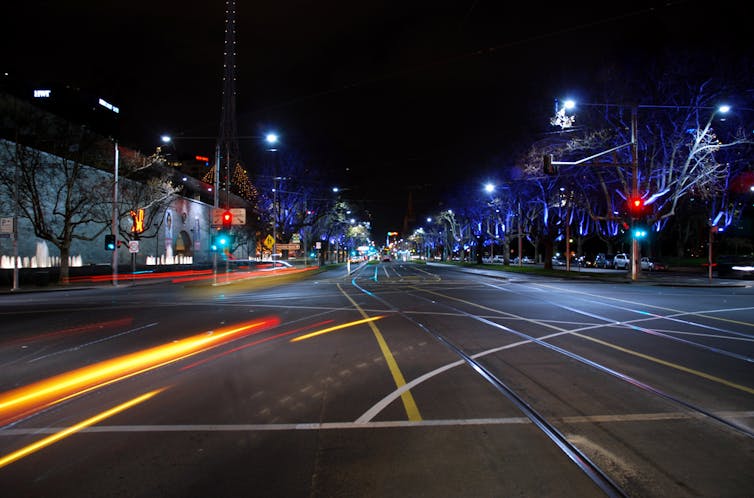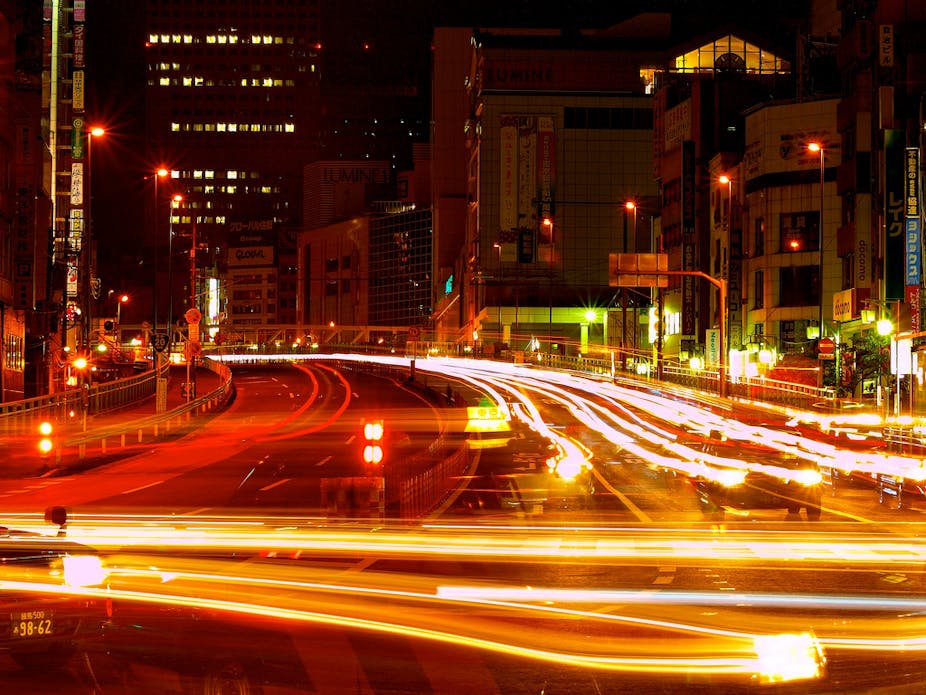If you’ve ever been caught in a traffic jam – and who hasn’t? – you’ll know Australia’s urban road networks are fast approaching full capacity. With the holiday season not far away, traffic jams and road safety will again be high on the public agenda.
In addition to the social costs, motorised traffic also has a significant environmental impact. Developing strategies to reduce traffic congestion in a cost-effective and sustainable manner is therefore a significant challenge.
For decades now, governments and road authorities in Australia (and around the world) have been trying to find answers to these complex and difficult questions. One of the main problems faced by road authorities is the lack of opportunity for real-world experimentation with traffic management. For this reason, road authorities rely heavily on engineer insight and experience, and intensive computer simulations.
Unfortunately, the main existing simulation software packages require significant resources to set up and calibrate. What then are tomorrow’s practical alternatives?

One solution to this problem may lie in “stochastic” (or probability-based) modelling of traffic – a method used in a branch of mathematical physics called statistical mechanics.
It may not seem obvious but traffic flow has a lot of similarities with other more fundamental physics systems. In a mathematical sense, there is a great deal of similarity between, say, the phase transition that turns water into ice and the phase transition that occurs when a road network goes from flowing freely to being gridlocked.
In a collaboration with traffic engineers at VicRoads which began in 2008, our group – including Joyce (Lele) Zhang from the Centre of Excellence for Mathematics and Statistics of Complex Systems – has developed a new way to model traffic flow on urban road networks, based on the theory of “cellular automata” (CA).
The idea of a cellular automata model is to divide up space into discrete cells, and allow particles to hop from one cell to another. In the case of CA road networks, the interacting particles are cars, and the discrete cells are sections of roads. The particles interact with each other via simple local rules, but the collection of a large number of such interacting particles can produce macroscopic behaviour that is not evident from the form of the individual particles themselves.
Similar phenomena frequently occur in nature, in the formation of schools of fish or flocks of birds to name a couple of instances. It is currently fashionable to refer to this phenomenon as “emergent behaviour”, but this is simply a mathematical statement of the idea that the sum is greater than its parts.
This kind of physicist’s approach to traffic modelling has been used since the 1990s for freeways, but several groups around the world are now working to extend these ideas to general road networks. In essence, this involves extending current models from one spatial dimension (a straight line; or freeway in this case) to two spatial dimensions (a plane; or road network in this case).
The model developed by our group was specifically designed to be able to quickly and easily test any conceivable algorithm for controlling traffic signals. By designing novel algorithms which more efficiently control the traffic signals on the existing network, we can reduce traffic congestion without the need to build more roads.
As a driver, you might have been at an intersection where the lights in front of you were green but you weren’t able to move due to cars blocking the intersection. More efficient traffic light cycles would eliminate this “green-light waste” and help end traffic jams.

One interesting observation arising from our models is that the macroscopic rules governing road networks tend to have a certain “memory” – a phenomenon known as hysteresis. In the context of traffic, this basically means it is much easier to clog up a network than to unclog it.
While this in itself may not be surprising, the real value of our modelling is that it allows us to study ways of improving the recovery from gridlocked networks to free-flowing ones.
One possibly counter-intuitive result we found is that by using a particular type of highly adaptive traffic signal system – which we call “self-organising traffic lights” – the traffic signals end up behaving seemingly randomly.
But the gain you get is that the fluctuations in traffic behavior (travel times, throughput, network density) become extremely small – much smaller than when one uses the sort of predictable traffic signals currently in use.
In other words, our modelling suggests that if you are willing to live with unpredictable traffic signals, the benefit is that travel times will become much more reliable.

